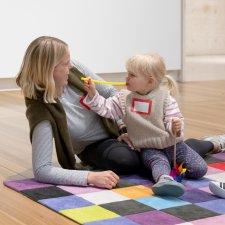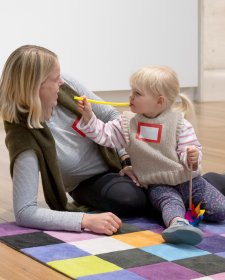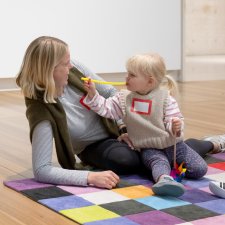Award-winning Australian architect, Glenn Murcutt describes the philosophy of his architectural practice and his minimalist portrait by Ken Done.
This video was produced with funds donated by Tim Fairfax AC.
Award-winning Australian architect, Glenn Murcutt describes the philosophy of his architectural practice and his minimalist portrait by Ken Done.
This video was produced with funds donated by Tim Fairfax AC.
My family lived in New Guinea, and we had to leave very quickly at the outbreak of the second world war - the Japanese were already bombing Port Moresby. And my father had invested in waterfront property around Sydney Harbour. It was so important to him to see the beauty of the landscape of Sydney Harbour. And as children we were taught to respect nature, but not just to respect it, to love it. When you look at nature, and for me in architecture, nature has a beautiful story. You look at the strength or our flora, but also look at the delicacy at the same time. So there is a strength and a delicacy.
I have endeavoured in my career to try and understand this landscape of ours and be able to integrate these elements, not in a determined way, but in a very relaxed way. I want an architecture that is quiet, and the more you start to see it, the more you start to understand it.
The roots of architecture remain relevant. If you go beyond the roots of architecture, about space, about order, about structure, about understanding nature and structure. So there is cultural history, there is typology, there is morphology, there is materiality, then there is the understanding of the topography. So your going to get buildings going up a hill like this in a higher density area, or moving like this down a hill. These are the sort of things that you are dealing with. And in portraiture there has got to be that centre of interest, a balance. A balance that has got to be light, a quality of light, depending upon whether there is required transparency or solidity. These are the sort of things we as architects work in a certain way. Painters like Done work in another way.
Ken Done has known me for a long time, and he observes the minimal nature of a form and tries in a very economic way to describe that form in a single line. For me that is very much the way I work, because I am also looking at a very economic way of developing spaces.
For the 45 years I have been in practice, it has been a sole practice without staff. I have recognised that if I want the standard and the level that I want to achieve, then I can do it rather quickly. I don't want to have to deal with personality clashes in practices. I don't want to have to deal with having to chase money. I don't want to have to deal with all those other dreadful aspects. I realised that I could get through an enormous amount if I was dedicated. If the work is bad it is my responsibility, if it comes off well, thank goodness, it is very pleasing. And so I was minimising the risk of doing terrible things. I am very happy at the age of over 80 now, still practicing like mad, and still enjoying it as I did as a young architect.



Drop into the Gallery any time for free creative activities inspired by artist Thom Roberts and his exhibition, The Immersive World of Thom Roberts.



Join us for Portrait Play these school holidays as we explore portraits and music. Come and meet the people that live on our walls, discover musical instruments hidden in the portraits and get creative on your journey through the galleries.



Do we have a treat for the smaller humans in your life! Little Faces is for babies and toddlers (with their grown up) to play, sing and have fun discovering a portrait together.